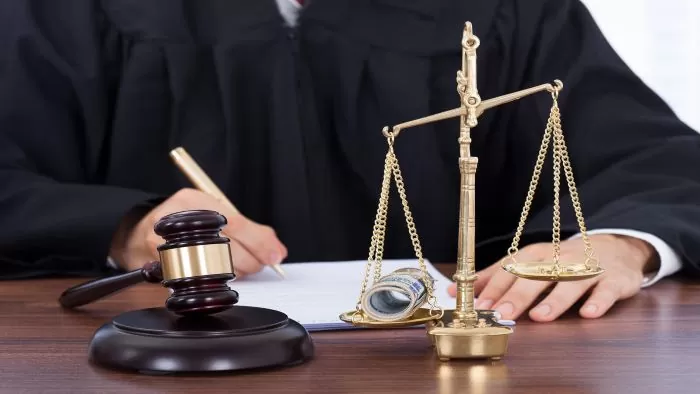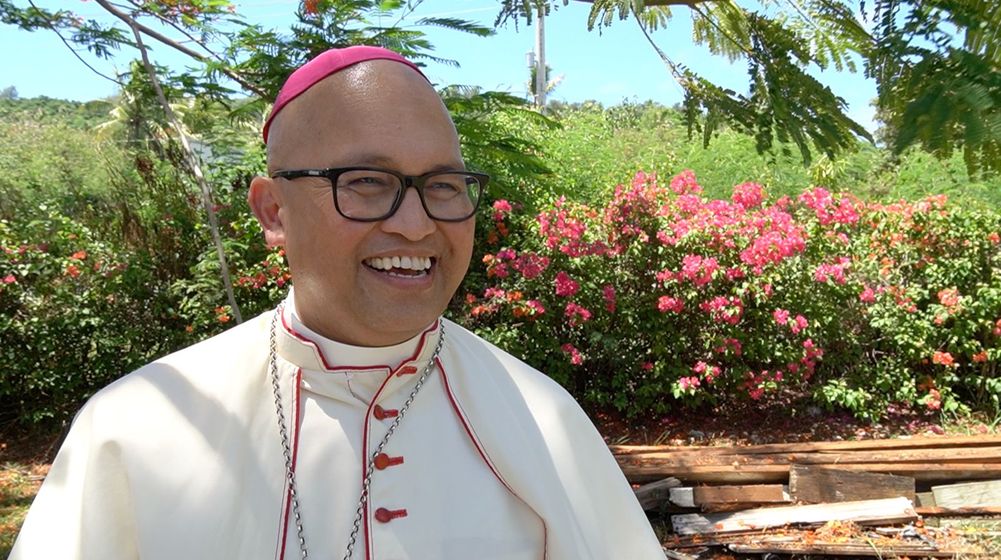By Tim Rohr
In ONCE UPON A TIME HAROLD WAS NOT THE HAROLD TROY NOW KNOWS, I responded to a post by Troy Torres of Kandit News which appeared to be defensive of the Neocatechumenal Way and specifically Father Harold Colorado Prieto, now assigned to Our Lady of Mt. Carmel Church in Agat. This post addresses Troy's concerns in more detail.
TROY: As a returning newcomer to my Catholic faith, I wasn't much informed of the politics surrounding the archdiocese and I had no idea Father Harold was among the priests often targeted by JungleWatch due to his association with the Neocatechumenal Way. I remember finding that out a few weeks into my journey back into Christianity and thinking, 'Gosh, I have no idea what's so wrong with Father Harold, and now I wonder about all this other stuff being said against the Way.’
As set forth in my previous post, "Harold was not the Harold Troy now knows." I don't know that for sure since I haven't had any experience with Harold in nearly ten years, but what I do know for sure is the Harold of ten years ago when he was one of Apuron's fiercest defenders, albeit a bit more behind-the-scenes than the likes of Edivaldo and Adrian.
And what was Harold defending Apuron from? He was defending Apuron from the few brave people who had finally summoned the courage to call out Apuron for what he was eventually found guilty of and which resulted in his being permanently removed from Guam by Pope Francis himself. He was defending the man, Apuron, who had not only permitted but engaged in the rape and molestation of young children, which, as Troy has told us, he was one.
Had Apuron admitted his crimes or even met privately to apologize to his initial accusers, the archdiocese might have been spared the loss of millions and millions of dollars in legal fees and properties, most of which had been given to the Church by common, hard-working Catholics who sacrificed their own comfort and family security to help the Church they loved.
In fact, Apuron, if he really did not do what he was accused of, would not have even had to apologize. He could have just met with those initial accusers and heard them out. I was involved with those initial accusers and I can state for a fact that all they wanted to do was confront the man they believed who had hurt them in their childhood. They did not want to sue - there was no way for them to do that in the beginning anyway, they did not want to hurt the Church, they did not want to do anything other than to assuage their childhood pain.
But what did Apuron do? He blocked the door to the Church with the likes of Adrian and Edivaldo and ultimately Harold and the rest of them, ran to Rome, and threatened to sue EVERYONE, including me.
Tim Rohr and his associates launched a vicious and calumnious attack on the Archbishop and the Church...Those who are orchestrating this campaign are inciting people into hatred of the Archbishop and the Catholic Church. They have produced scandal, confusion and grave errors with the cruel intent to injure the Archbishop, the Catholic Church in Guam and many other people of good will who have been outraged and harassed. Therefore, the Archdiocese of Agana is in the process of taking canonical and legal measures against those perpetrating these malicious lies. - Press Release, Archdiocese of Agana, May 31, 2016
Around this time, certain members of the NCW, through proxies, initiated communications with certain members of my family who were rightly upset that I was putting my family in danger by standing up to Apuron and the neocat cabal which was backing him. Because I do not want to hurt my family, I won't go any further into this at this point, but eventually I had to make a decision: to shut up and let the whole thing go or lose my family. I didn't let it go.
At that point, no one else was willing to go face to face, in the news, on TV, on the radio, and in the newspapers, to go after the vile "filth in the church" (as Pope Benedict called it) that had ruined the childhoods of innocent children like Troy. I could never have lived with myself if I had let it go. My decision, to stand up to Apuron - protected by the likes of Harold, brought immeasurable suffering and damage to my family, especially my youngest ones.
TROY: But if we're being honest, it wasn't just the Way. The clergy sex abuse was happening before the Way was even conceived. Decades before the Way found its way to our shores, parishioners and ordinaries were looking the other way when priests and Catholic school teachers were molesting and raping children.
Exactly right. No one blamed the decades of clerical decadence on the Way. In fact, the real culprits are the parents who knew this was happening, and as Troy says "were looking the other way." But finally, those parents did rise up to end this when, at last, a few brave people began standing up.
The real villains in this vile saga are those who did everything possible to interfere with truth and justice, including those who destroyed my family, and Harold was one of them. And they did this to save the Neocatechumenal Way in Guam, especially the crooked and ill-gotten seminary.
As we would later expose, the real enemy of the Catholics of Guam was the leadership of the Neocatechumenal Way all the way up to the "Red Pope," Cardinal Fernando Filoni, the Neocats main man in Rome.
On September 7, 2016, after a group of Catholics, otherwise known as the Laity Forward Movement, attempted to visit the Redemptoris Mater Seminary in Yona and were turned away (another door blocked), a letter from then-Rector of the Seminary, Msgr. David C. Quitugua to then-Vicar General, Fr. Jeff San Nicolas surfaced. In the letter, Quitugua tells San Nicolas: "Cardinal Filoni's instruction is that "no 'visit' can be made to the Seminary."
This is the seminary that Guam Catholics had been supporting for 16 years and for which they had contributed millions of dollar, a supposed "Seminary for Guam."
Quitugua's letter confirmed what we had known for quite awhile, the Archdiocese of Agana was being run by the Neocat leadership all the way up to Rome, and that leadership, with the local seminarians including Harold as their "boots on the ground," had one mission: protect Apuron at all costs, protect the man who had perpetrated and presided over the insidious evils that Troy rightly has railed against.
TROY: My dad was part of the Way, and I never knew him to be a happier person prior to his membership in the community where he belonged. In fact, every person I know and I have met who has been in the Way is a joyful, excited Catholic...goodness overflows everywhere, within the Way, among the traditional Catholic laity and ordinaries, within the communities of our Protestant brothers and sisters, among agnostics and non-believers. We are all on different parts of a journey, each of us in need of encouragement and at times correction without prideful and wicked admonishment and abandonment.
Throughout the "Apuron Wars," the authors of JungleWatch have done their best to distinguish between the Neocat leadership, who we usually referred to as "Kiko's," and the type of members like Troy's dad. In fact, I, in particular, often wrote in praise of the Way for doing what the rest of our Church so sadly fails at: encouraging and providing for the catechesis of the laity, especially adults. I always believed that the attraction of the Way for most was that they were hungry for what their pastors should have been providing, but, save for a few, did not.
It wasn't the fault of the common member that they were often being taught heresy, a fact that has been demonstrated time and again, and rightly labeled as such by
Bishop Athanasius Schneider. The common member, whose faith formation usually consisted of little more than a few years of CCD, had little to compare the ways of the Way to.
In fact, regular Sunday church-going Catholics will rarely ever hear a reference to the Catechism of the Catholic Church or be encouraged to read it...or read anything for that matter. And I have never heard any recommendation from the pulpit to pray the Liturgy of the Hours, something the Neocats are unwaveringly devoted to.
Despite all the "goodness everywhere within the Way" (Troy), the bad boys from New Jersey and Rome were using Guam's Hafa Adai and Inafa' maolek spirit, not to mention the unquestioning local loyalty to our Catholic Church, to bilk us for millions, insert heresy through its seminary, and protect the man who oversaw, protected, and participated in the rape and molestation of many innocent, young bodies and the mutilation of their souls.
And in all this, Harold was Apuron's right hand man.
So if it took "prideful and wicked admonishment and abandonment" (Troy) to out the filth, then I am proud to have been a part of it. Meanwhile, we have yet to hear an apology from Harold or any of his buddies who are still here. And the real reason there has been no apology, is because they are not sorry. In fact they are still here because Harold and his pals are not only not going away, they are preparing for their next move, and in my opinion, the appointment of Ryan Jimenez as our new archbishop was a significant step in that direction. I'll leave it to Jimenez to prove otherwise.















